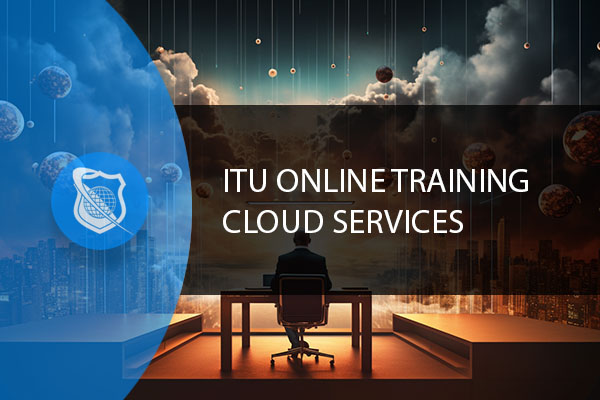Introduction of Cloud Computing Applications Examples
In today’s interconnected world, cloud computing has evolved from a technical jargon into a transformative force that has reshaped how we interact with technology, both in our personal lives and in the business landscape. This article aims to provide an in-depth look into cloud computing applications examples, shedding light on the myriad of cloud-based applications that have seamlessly integrated into our daily routines. From the applications of cloud computing in data storage to cloud computing activity in real-time analytics, this article will serve as a comprehensive guide. Whether you’re an individual who’s curious about the cloud services you’re using or a business leader aiming to optimize your operations through cloud-based solutions, you’ll find valuable insights here.
Expanded Section: A Brief History of Cloud Computing
The Genesis of Cloud Computing
The concept of cloud computing wasn’t born overnight. It has its roots in the early days of computing, where the idea was to share computing resources to optimize system efficiency. With the advent of faster internet speeds and more robust hardware, cloud computing transitioned from a theoretical concept to a practical solution that has become a cornerstone in today’s technological landscape. The cloud network examples we see today, like global data centers and complex cloud infrastructure, are the result of years of innovation and investment.

Get Ahead In Cloud Computing
At ITU, we offer an exclusive Cloud Computing training series designed to prepare you for certification and/or to help you gain knowlege of all Cloud based platforms including AWS, Azure and Gooogle Cloud.
Get access to this exclusive Cloud Computing Training today.
Milestones in Cloud Computing
The journey of cloud computing is marked by several key milestones that have shaped its current form. Here are some pivotal moments:
- 2006: Amazon Web Services (AWS) Launched
Amazon Web Services (AWS) was one of the first to offer a scalable, pay-as-you-go cloud service, setting the stage for cloud computing business applications. AWS provided businesses and developers with the tools to build applications in the cloud, effectively democratizing the technology. - 2008: Google Cloud Platform Introduced
Google entered the cloud computing arena with the introduction of Google Cloud Platform. This service expanded the applications in the cloud, offering robust data analytics and machine learning capabilities, among other features. It provided more options for businesses looking for cloud-based applications examples to streamline their operations. - 2010: Microsoft Azure Enters the Market
Not to be left behind, Microsoft launched Azure, its own cloud computing service. Azure offered a range of cloud computing apps and services, including those for computing, analytics, storage, and networking. Its integration with Microsoft’s software products made it a popular choice for businesses already invested in the Microsoft ecosystem.
These milestones not only signify the growth of cloud computing but also highlight the increasing variety of cloud-based solutions examples available to both individuals and businesses. From cloud computing real-life examples like data storage and streaming services to more complex uses like real-time analytics and machine learning, the evolution of cloud computing continues to offer new possibilities.
What is Cloud Computing?
Defining Cloud Computing
Cloud computing is a paradigm shift in how we understand and interact with computing resources. At its core, cloud computing is the delivery of various computing services—ranging from servers, storage, and databases to networking capabilities, analytics, and software—over the internet. Instead of relying on your local hardware or on-premise servers, you can access these services and resources from a network of remote servers hosted on the internet. This shift allows for more flexibility, scalability, and efficiency in computing. For example, cloud platform examples like AWS, Google Cloud, and Microsoft Azure offer a variety of services that can be tailored to meet specific business or individual needs.
Applications of Cloud Computing
Cloud computing is a multifaceted technology with a plethora of applications that go beyond mere data storage. Here are some of the key areas where cloud computing has made a significant impact:
- Data Storage and Backup: One of the most basic yet crucial applications of cloud computing is data storage. Services like Google Drive and Dropbox are examples of cloud-based applications that allow users to store, share, and access files from anywhere with an internet connection.
- Web-based Email Services: Gmail, Yahoo Mail, and Outlook are examples of cloud services that have replaced traditional email software, offering the ability to check your messages from any device.
- Cloud Hosting and Development Tools: Cloud computing provides a virtual environment for developers to collaborate, develop, and deploy applications. These environments offer cloud computing activity like real-time collaboration and version control.
- Streaming Media Services: Platforms like Netflix and Spotify are real-life examples of cloud computing, where the content is stored in the cloud and streamed directly to the end-users.
- Data Analytics: Businesses are increasingly using cloud-based analytics tools to sift through large data sets for insights. This is an example of cloud computing applications in real life that has a direct impact on decision-making and strategy.
- Internet of Things (IoT): The IoT is another area that benefits from cloud computing. Devices collect data and then send it to the cloud where it can be analyzed and acted upon.
- Artificial Intelligence and Machine Learning: Advanced cloud platforms offer machine learning services, allowing businesses to build, train, and deploy machine learning models. This is a more complex application of cloud computing but one that has significant potential for the future.
- Collaboration Tools: Services like Slack and Microsoft Teams enable real-time collaboration among team members, offering features like chat, video conferencing, and file sharing, all hosted in the cloud.
By understanding these applications of cloud computing, you can see how this technology has permeated almost every aspect of our digital lives, from personal use cases to complex business operations. Whether it’s the use of cloud computing in daily life for storing photos or more specialized cloud computing business applications for data analytics, the cloud is here to stay and will continue to evolve.

Get Ahead In Cloud Computing
At ITU, we offer an exclusive Cloud Computing training series designed to prepare you for certification and/or to help you gain knowlege of all Cloud based platforms including AWS, Azure and Gooogle Cloud.
Get access to this exclusive Cloud Computing Training today.
Cloud Computing Examples in Real Life
Everyday Cloud Computing Activity
Many of us engage in cloud computing activity without even realizing it. For instance, when you upload photos to Google Drive, you’re using cloud storage. When you stream your favorite shows on Netflix, you’re accessing content hosted on cloud servers. These are real-life examples of cloud computing that have become integral parts of our daily routines. Even the use of cloud computing in daily life extends to mobile apps that sync data through the cloud, ensuring you have access to your information wherever you go. These services are just the tip of the iceberg when it comes to the diverse range of cloud applications examples that impact our everyday lives.
Business Applications
In the business realm, cloud computing has been nothing short of transformative. Companies are increasingly relying on cloud-based solutions for a variety of tasks. For example, Salesforce and HubSpot are cloud computing business applications that have fundamentally changed how companies manage customer relationships and execute marketing strategies. These platforms offer a suite of tools that include everything from customer data management to analytics, all accessible from anywhere with an internet connection. This has led to more streamlined operations and has opened the door for advanced data analytics and customer segmentation.
10 Examples of Cloud Computing You’re Already Using
- Google Drive: This cloud storage service allows users to store files online and access them from any device. It’s a prime example of cloud-based applications that have become essential for both personal and professional use.
- Dropbox: Another cloud storage solution, Dropbox offers similar functionalities to Google Drive but with a focus on seamless file synchronization across devices.
- Netflix: One of the most popular streaming services, Netflix relies on cloud computing to deliver a vast library of content to its millions of subscribers.
- Spotify: This music streaming service uses cloud servers to offer access to a massive library of songs and podcasts, allowing users to stream or download content based on their preferences.
- Adobe Creative Cloud: This suite of creative software products, ranging from Photoshop to Premiere Pro, is hosted in the cloud, allowing for real-time collaboration and updates.
- Slack: This collaboration tool is another example of cloud computing applications in real life, offering chat rooms, direct messaging, and file sharing to facilitate workplace communication.
- Zoom: This video conferencing service became a household name during the pandemic, and it operates entirely in the cloud, offering scalable solutions for both personal and business use.
- Microsoft Office 365: This cloud-based version of Microsoft’s popular Office suite allows for real-time collaboration on documents, spreadsheets, and presentations.
- Amazon Web Services (AWS): This comprehensive cloud services platform offers a range of computing power, database storage, and content delivery solutions, among other functionalities.
- Salesforce: This customer relationship management (CRM) software is one of the best examples of cloud computing business applications, offering a range of tools to manage and analyze customer interactions.
| Application | Description | Primary Use | Notable Providers |
|---|---|---|---|
| Google Drive | Cloud-based file storage and collaboration tool | Document sharing and collaboration | Google, Microsoft |
| Dropbox | File hosting service with sync and file sharing features | File storage and synchronization | Dropbox, Microsoft |
| Netflix | Streaming service for movies and TV shows | Video streaming | Netflix, Amazon |
| Spotify | Music streaming platform with a vast library | Music streaming | Spotify, Apple |
| Adobe Creative Cloud | Suite of creative software for designers | Graphic design and content creation | Adobe |
| Slack | Collaboration tool for team communication | Team messaging and collaboration | Slack, Microsoft |
| Zoom | Video conferencing and online meeting platform | Video conferencing and virtual meetings | Zoom, Microsoft |
| Microsoft Office 365 | Cloud-based productivity suite | Document editing and collaboration | Microsoft |
| Amazon Web Services | Comprehensive cloud services platform | Cloud infrastructure and computing services | AWS, Google, Azure |
| Salesforce | Customer relationship management (CRM) software | Sales and customer management | Salesforce, HubSpot |
By understanding these cloud computing applications examples, you can see how deeply integrated this technology is in both our personal and professional lives. From cloud storage solutions that we use for personal files to complex business applications that manage vast amounts of data, cloud computing is a versatile technology that offers a range of solutions to meet various needs.
The Benefits of Using Cloud-Based Applications
Scalability and Flexibility
One of the standout advantages of cloud computing is its inherent scalability and flexibility. Unlike traditional on-premise solutions, cloud-based applications can be easily scaled to accommodate growing data or user demands. This is particularly beneficial for businesses that experience fluctuating workloads. For example, an e-commerce site can scale its cloud resources during peak shopping seasons and scale down during off-peak times. This level of flexibility in cloud computing applications examples is a game-changer for businesses looking to adapt quickly to market changes or business needs.
| Benefit | Description | Examples of Benefits |
|---|---|---|
| Scalability | Easily scale resources up or down based on needs | Handling increased website traffic during peak seasons |
| Reducing server capacity during off-peak times | ||
| Cost-Efficiency | Eliminates need for physical hardware, cost savings | Reduced upfront hardware costs |
| Efficient resource allocation, optimizing operational costs |
Cost-Efficiency
Another compelling benefit of cloud computing is cost-efficiency. The pay-as-you-go model eliminates the upfront costs of purchasing and maintaining physical hardware and software. This is a significant application of cloud computing that has made it an attractive option for businesses of all sizes. By leveraging cloud-based solutions, companies can allocate resources more efficiently, thereby reducing operational costs. This cost-saving aspect is often a key factor that encourages businesses to transition from traditional computing methods to cloud-based systems.

Get Ahead In Cloud Computing
At ITU, we offer an exclusive Cloud Computing training series designed to prepare you for certification and/or to help you gain knowlege of all Cloud based platforms including AWS, Azure and Gooogle Cloud.
Get access to this exclusive Cloud Computing Training today.
Cloud Computing in Different Industries
| Industry | Cloud Computing Applications | Specific Use Cases |
|---|---|---|
| Healthcare | Secure data storage, telemedicine services | Electronic Health Records (EHRs), remote patient consultations |
| Retail | Inventory management, customer analytics | Real-time inventory tracking, customer behavior analysis |
| Finance | Data security, financial analytics | Secure data storage, risk assessment, fraud detection |
| Education | Online learning platforms, collaborative tools | E-learning platforms, virtual classrooms |
| Manufacturing | Supply chain management, predictive maintenance | Real-time supply chain monitoring, predictive maintenance |
Healthcare
Cloud computing has made significant inroads into the healthcare industry, offering solutions that were previously unimaginable. For instance, Electronic Health Records (EHRs) are now stored securely in the cloud, allowing for more accessible and coordinated patient care. Telemedicine is another area where cloud computing apps have been revolutionary. Doctors can now consult with patients remotely, offering diagnoses and treatment plans without the need for an in-person visit. These are examples of cloud-based applications that not only streamline healthcare processes but also make medical care more accessible to people in remote locations.
Retail
The retail industry has been one of the earliest adopters of cloud computing, and for a good reason. E-commerce platforms, which are essentially cloud-based applications, have revolutionized the way we shop. These platforms offer a range of cloud computing business applications, from inventory management and sales tracking to customer relationship management. For instance, cloud-based Point of Sale (POS) systems can integrate sales data with inventory levels in real-time, allowing for more efficient stock management. Moreover, cloud computing allows retailers to tap into advanced analytics to understand customer behavior better, thereby offering more personalized shopping experiences.
By understanding the benefits and applications of cloud computing across different industries, it becomes clear that this technology is not just a passing trend but a fundamental shift in how businesses operate and deliver value to their customers. Whether it’s the scalability offered by cloud-based applications or the operational efficiencies gained through cloud computing activity, the impact of this technology is far-reaching and transformative.
Future Trends in Cloud Computing
Cloud Infrastructure and Platforms
As we look ahead, the future of cloud computing appears to be on a trajectory of rapid innovation and diversification. One of the most notable trends is the evolution of cloud infrastructure and platforms. Companies are increasingly adopting hybrid and multi-cloud strategies to meet specific business requirements. Hybrid cloud solutions combine private and public clouds, allowing data and applications to be shared between them. This approach provides businesses with greater flexibility and more deployment options. Multi-cloud solutions use multiple cloud services, often from different cloud providers, to meet various business and technical requirements. These emerging cloud infrastructure examples and cloud platform examples are indicative of a more modular and customizable approach to cloud computing.
Cloud Products and Solutions
Another exciting trend is the continuous development of innovative cloud products and solutions. As cloud technology matures, we’re seeing more specialized cloud-based solutions examples designed to solve industry-specific challenges. For instance, there are now cloud products tailored for the healthcare sector that focus on data security and compliance. Similarly, retail-focused cloud solutions offer advanced customer analytics and inventory management features. These specialized cloud products examples are making it easier for industries to adopt cloud computing by providing solutions that cater to their unique needs.
Conclusion for Cloud Computing Applications Examples
Cloud computing has transitioned from being a technological novelty to becoming a core component of modern business and daily life. Its applications are diverse, ranging from simple data storage solutions to complex business process automation and data analytics. The use of cloud computing in daily life is so pervasive that many of us engage with cloud services without even realizing it. As we look to the future, cloud computing is set to become even more integral to our daily activities and professional lives.
The ongoing advancements in cloud infrastructure and the development of industry-specific cloud products are testament to the technology’s transformative potential. As these trends continue to evolve, we can expect to see even more advanced real-life examples of cloud computing, each designed to solve complex problems and improve efficiencies.
Whether you’re an individual looking to understand the cloud services you use daily or a business seeking to leverage cloud computing for operational efficiency, the landscape is rich with opportunities. By understanding these cloud computing applications examples and future trends, you’re better positioned to make informed decisions and leverage the full power of cloud computing.

Get Ahead In Cloud Computing
At ITU, we offer an exclusive Cloud Computing training series designed to prepare you for certification and/or to help you gain knowlege of all Cloud based platforms including AWS, Azure and Gooogle Cloud.
Get access to this exclusive Cloud Computing Training today.
FAQ: Exploring Cloud Computing Applications Examples
What Are Some Real-Life Examples of Cloud Computing Applications?
Real-life examples of cloud computing applications encompass a wide range of services we use daily. These include cloud-based storage solutions like Google Drive and Dropbox, streaming platforms like Netflix and Spotify, and even email services like Gmail. These applications leverage cloud infrastructure to deliver their services over the internet.
How Does Cloud Computing Benefit Businesses in Terms of Scalability?
Cloud computing offers businesses significant advantages in terms of scalability. Cloud-based applications allow companies to scale their resources up or down based on their needs. For instance, during peak shopping seasons, an e-commerce business can scale up its cloud servers to handle increased website traffic and then scale down when the season ends, optimizing costs and performance.
Can You Explain the Concept of Hybrid and Multi-Cloud Solutions in Cloud Computing?
Certainly! Hybrid cloud solutions combine both private and public cloud infrastructure to provide greater flexibility and data-sharing capabilities. Multi-cloud solutions, on the other hand, involve using multiple cloud services, often from different providers, to meet specific business requirements. These strategies allow businesses to tailor their cloud computing environment to their unique needs.
What Are Some Innovative Cloud Products and Solutions Available Today?
Innovative cloud products and solutions continue to emerge across various industries. For example, in healthcare, there are cloud-based solutions focused on secure data storage and telemedicine services. In retail, specialized cloud products offer advanced customer analytics and inventory management. These solutions are designed to address industry-specific challenges and improve operational efficiencies.
How is Cloud Computing Expected to Evolve in the Future?
The future of cloud computing is marked by ongoing advancements in cloud infrastructure and platforms. Companies are increasingly adopting hybrid and multi-cloud strategies to meet diverse business needs. Additionally, we can expect to see the development of more specialized cloud products examples designed to address industry-specific challenges. As technology continues to evolve, cloud computing is set to become even more integral to our daily activities and professional lives.
You may also like:
IaaS Products : Why They Are Essential for Modern Businesses
Pod vs Container : Understanding the Key Differences
Cloud Plus Certification : Bridging the Gap in Your IT Career
Cloud Computing Deployment Models: Which One is Right for Your Business?

























1 thought on “Cloud Computing Applications Examples : The Top Cloud-Based Apps You’re Already Using”
Ι loved it!